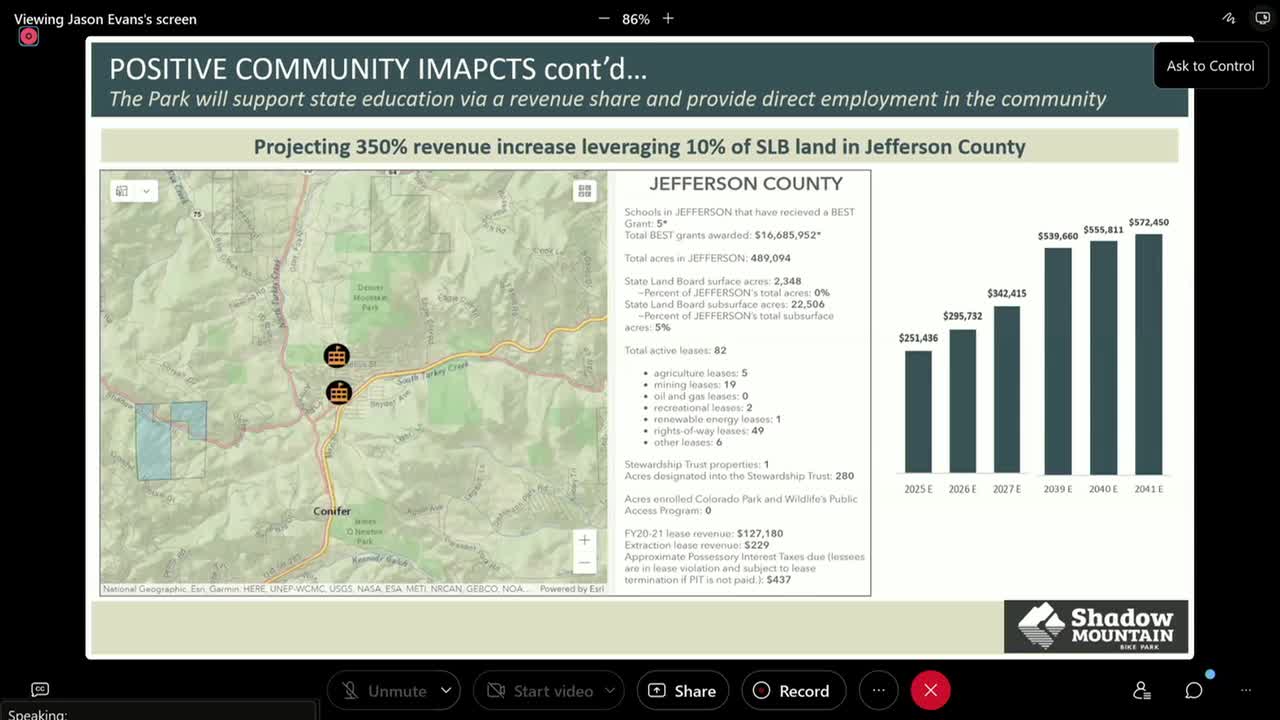Wildlife Concerns Rise Over Proposed Mountain Bike Park Development
September 23, 2024 | Jefferson County, Colorado
This article was created by AI summarizing key points discussed. AI makes mistakes, so for full details and context, please refer to the video of the full meeting. Please report any errors so we can fix them. Report an error »

During a recent government meeting, significant discussions emerged regarding the potential impact of a proposed mountain bike park on local wildlife and habitat. Concerns were raised by several commissioners, particularly about the implications of habitat fragmentation and the effects of increased human activity on crucial wildlife areas.
One commissioner highlighted that the Elk Creek Fire District, which would primarily serve the park, had not raised any concerns during discussions. However, the focus quickly shifted to wildlife, with another commissioner expressing skepticism about the project's potential to disrupt the habitat for elk and other species. The commissioner referenced a consultant's report indicating that the constant use of the bike park could significantly diminish its value as a habitat.
The dialogue revealed a tension between development and conservation, with commissioners questioning how the proposed trails could coexist with the need to protect wildlife. The developers acknowledged that any development would have some impact but argued that their plan could mitigate effects better than alternative land uses, such as residential development. They pointed to examples of successful coexistence between recreational areas and wildlife, citing Evergreen Lake as a model where active management has allowed for both recreation and wildlife preservation.
The developers committed to exploring options for seasonal closures of trails to protect wildlife during critical periods and emphasized their willingness to work with wildlife management authorities to find a balance. They argued that their approach could enhance the health of the forest while still allowing for recreational use.
As discussions continue, the balance between development and wildlife conservation remains a central theme, with stakeholders keenly aware of the ecological implications of their decisions. The outcome of this project could set a precedent for future developments in the area, highlighting the ongoing challenge of harmonizing human activity with environmental stewardship.
One commissioner highlighted that the Elk Creek Fire District, which would primarily serve the park, had not raised any concerns during discussions. However, the focus quickly shifted to wildlife, with another commissioner expressing skepticism about the project's potential to disrupt the habitat for elk and other species. The commissioner referenced a consultant's report indicating that the constant use of the bike park could significantly diminish its value as a habitat.
The dialogue revealed a tension between development and conservation, with commissioners questioning how the proposed trails could coexist with the need to protect wildlife. The developers acknowledged that any development would have some impact but argued that their plan could mitigate effects better than alternative land uses, such as residential development. They pointed to examples of successful coexistence between recreational areas and wildlife, citing Evergreen Lake as a model where active management has allowed for both recreation and wildlife preservation.
The developers committed to exploring options for seasonal closures of trails to protect wildlife during critical periods and emphasized their willingness to work with wildlife management authorities to find a balance. They argued that their approach could enhance the health of the forest while still allowing for recreational use.
As discussions continue, the balance between development and wildlife conservation remains a central theme, with stakeholders keenly aware of the ecological implications of their decisions. The outcome of this project could set a precedent for future developments in the area, highlighting the ongoing challenge of harmonizing human activity with environmental stewardship.
View full meeting
This article is based on a recent meeting—watch the full video and explore the complete transcript for deeper insights into the discussion.
View full meeting
